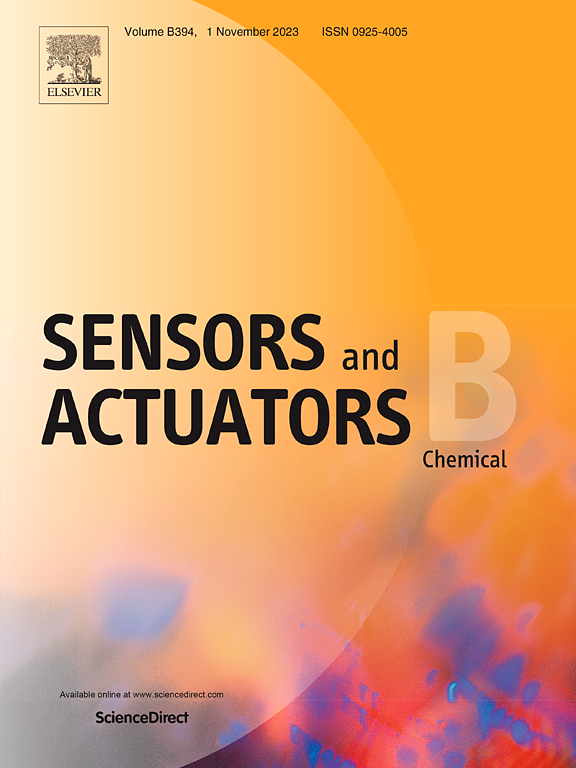Implanted fiber-optic sensor for analyzing catalytic reactions and kinetics in Au/TiO2 systems
IF 8
1区 化学
Q1 CHEMISTRY, ANALYTICAL
引用次数: 0
Abstract
In heterogeneous photocatalytic reactions, understanding the catalytic processes and its kinetics is crucial for catalyst design and performance evaluation. However, real-time monitoring the interface reaction such as pollutant degradation remains a challenge. In this study, the implantable optical fiber sensors with real-time catalytic monitoring capability were created by modifying the sensing surface with Au/TiO2 heterojunction photocatalysts. As pollutants adsorb and degrade on the catalytic interface, surface refractive index changes occur. The evanescent field on the sensing surface covers the photocatalytic layer, enabling in situ and real-time monitoring of surface refractive index changes for catalytic reaction analysis. The flexible fiber-optic Surface Plasmon Resonance (SPR) sensors can be directly immersed in a pollutant solution Rhodamine 6 G (R6G) to monitor its degradation rate and kinetic processes. It reveals that the optimal size of Au nanoparticles (AuNPs) can facilitate efficient electron transfer at heterojunction catalysts. The time-resolved resonance wavelength shift further elucidates the degradation kinetics of photocatalysts with varying Au/TiO2 composition. The fiber-optic sensor demonstrated comparable accuracy to conventional UV-Vis spectrophotometry in assessing TiO2 photocatalytic degradation (84.13 % vs. 81.25 % efficiency, respectively), with a relative deviation less than 5 %. However, unlike the discrete data collected by traditional UV-Vis methods, the miniaturized and implantable fiber-optic SPR sensor can collect data every 0.25 s. It demonstrates real-time monitoring capability and enables more accurate evaluation of dynamic reaction processes. This in situ sensing strategy provides new insights into photocatalytic mechanisms and shows great potential for guiding catalyst design and optimization.
用于分析Au/TiO2体系催化反应和动力学的植入式光纤传感器
在非均相光催化反应中,了解催化过程及其动力学对催化剂的设计和性能评价至关重要。然而,实时监测污染物降解等界面反应仍然是一个挑战。在本研究中,通过用Au/TiO2异质结光催化剂修饰传感表面,制备了具有实时催化监测能力的可植入光纤传感器。随着污染物在催化界面上的吸附和降解,表面折射率发生变化。传感表面的倏逝场覆盖在光催化层上,实现了对表面折射率变化的现场实时监测,用于催化反应分析。柔性光纤表面等离子体共振(SPR)传感器可直接浸入罗丹明6g (R6G)污染物溶液中,监测其降解速率和动力学过程。结果表明,最佳尺寸的金纳米颗粒(AuNPs)可以促进异质结催化剂上电子的高效转移。时间分辨共振波长位移进一步阐明了不同Au/TiO2组成光催化剂的降解动力学。光纤传感器在评估TiO2光催化降解方面的准确度与传统紫外-可见分光光度法相当(效率分别为84.13%和81.25%),相对偏差小于5%。然而,与传统UV-Vis采集的离散数据不同,小型化、可植入的光纤SPR传感器每0.25 s采集一次数据。它展示了实时监测能力,能够更准确地评估动态反应过程。这种原位传感策略为光催化机理提供了新的见解,并显示出指导催化剂设计和优化的巨大潜力。
本文章由计算机程序翻译,如有差异,请以英文原文为准。
求助全文
约1分钟内获得全文
求助全文
来源期刊

Sensors and Actuators B: Chemical
工程技术-电化学
CiteScore
14.60
自引率
11.90%
发文量
1776
审稿时长
3.2 months
期刊介绍:
Sensors & Actuators, B: Chemical is an international journal focused on the research and development of chemical transducers. It covers chemical sensors and biosensors, chemical actuators, and analytical microsystems. The journal is interdisciplinary, aiming to publish original works showcasing substantial advancements beyond the current state of the art in these fields, with practical applicability to solving meaningful analytical problems. Review articles are accepted by invitation from an Editor of the journal.
 求助内容:
求助内容: 应助结果提醒方式:
应助结果提醒方式:


